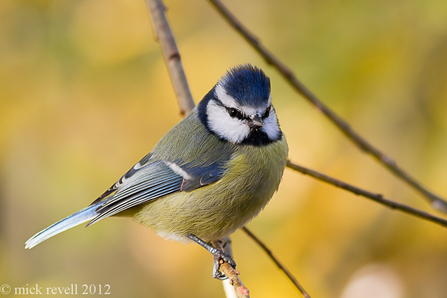Climate change in Kent has largely been in line with UK-wide climatic trends but, in in the long term, it is thought that Kent’s geographical location and long coastline means that it is likely to suffer from some of the severest impacts of climate change in the UK. Kent County Council is suggesting that by 2050 winters are likely to be warmer to around 2.20C, summers are likely to be hotter by around 2.80C, the hottest summer days could increase by up to 3.70C, winter rainfall is likely to increase by 16% and summer rainfall is likely to decrease by 19%.
~ By Anne Waite, Conservation Officer

Photo by Mick Revell
Whilst our ability to predict the way in which biodiversity will be influenced by climate change is limited, current evidence and anecdotal reports appear to suggest that climate change is already affecting our wildlife. The Woodland Trust been recording the effects of weather and climate change on wildlife since 2000. Results indicate that events such as budburst, first leaf, first flowering, the first recorded amphibians, insects, and migratory birds, and even the dates when lawns are mown for the first time are all getting earlier.
This shift can have major impacts – for example, the spring flowers of woodland such as bluebells and wood anemones produce leaves early to exploit the period before trees come into leaf; as trees come into leaf earlier, the time in which woodland flowers can put on growth becomes shorter and such plants are now showing a reduction in cover. Likewise, many bird species such as blue tits rely on spring peaks in caterpillar numbers to feed their young, and their breeding cycle is timed to exploit this. However, if the trigger for breeding (e.g. day length) is different to the trigger for caterpillar hatching (e.g. temperature), then birds may find that the caterpillar peak has passed by the time their chicks have hatched.
Photo by Ben Bishop
Climate change is also likely to impact our habitats and re-shape our coastline. In ‘Kent: Preparing for Climate Change’, Kent County Council has highlighted that chalk grassland is vulnerable to drought and increased winter rainfall, and this is likely to lead to changes in species composition, parching and erosion of soils, and increased fire risk.
Our chalk rivers and streams will be vulnerable to drought, potentially leading to drying out, migration of stream heads, and changes in flow, which can lead to destabilisation of banks, an increase in sedimentation, concentration of pollution, reductions in habitat area, and reduction in the effectiveness of flood storage services. Extreme high water from rising sea levels combined with storm surge and large waves could lead to a higher risk of a breach in low-lying areas of the coast and reorganisation of coastal ecosystems, while and coastal erosion is likely to cause loss of coastal habitats.
We are moving towards an approach that looks more holistically at our landscape and emphasises the importance of nature
So how is Kent Wildlife Trust addressing these challenges, both already observed and predicted?
We are moving towards an approach that looks more holistically at our landscape, an approach that focuses on nature and society in equal measure to restore the natural processes vital to our wildlife and people. At the heart of this approach is the restoration of natural processes, moving back to less intensive ways of managing our landscapes and emphasising the importance of nature to the health, wellbeing and prosperity of people. This encompasses the restoration of habitats so they can better absorb rainfall, reduce soil erosion and flood risk, increase carbon storage and provide cleaner air. Within this approach there exist the opportunities to enrich our depleted biodiversity and see the return of some of our most characteristic lost species.

People and bluebells - Tom Marshall
Pilot projects such as ‘Source-to-Sea’, a three-year Interreg project concentrating on the Lower Stour catchment in East Kent, will enable us to study the potential for restoring the natural flow of water through river catchment systems, better water management and biodiversity enhancements, which together may help to reduce flooding, improve water quality and provide enhanced habitat for a wide array of wildlife.
We are also adopting an evidence-based approach to the decisions we make. Through projects such as the National Lottery Heritage Funded Nature’s Sure Connected we are working in partnership to evidence landscape-scale conservation, developing and testing a robust and sustainable methodology that will help us to monitor and assess the state of nature and the impact of our conservation actions at a landscape scale. It is acknowledged that not all changes observed will be due to climate change, and this project will provide opportunities to analyse the causes of change, and identify areas where climate-change adaptation is needed.

Wildlife is in crisis.
We need to work with you.